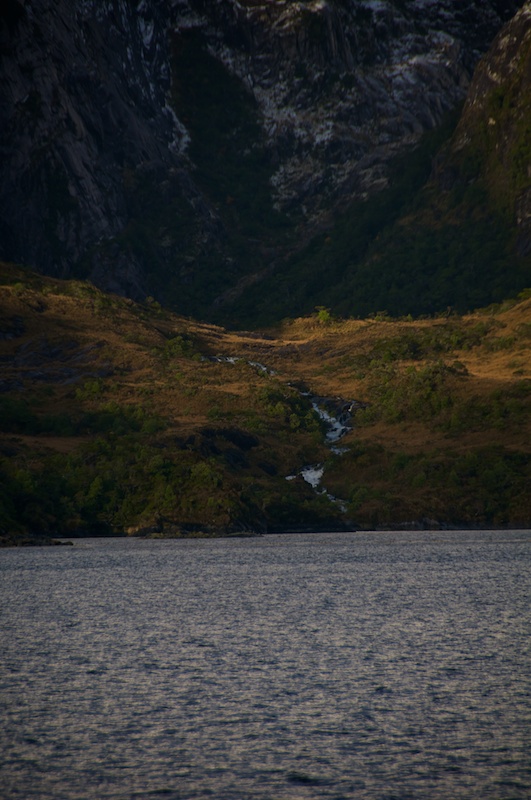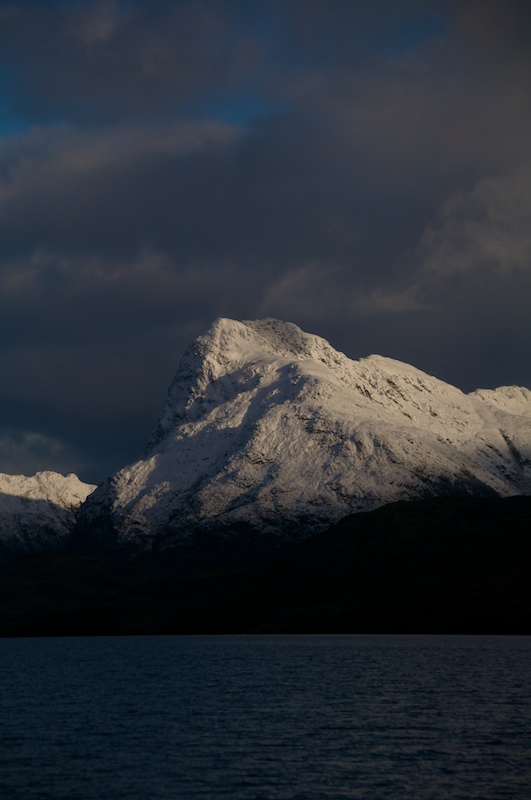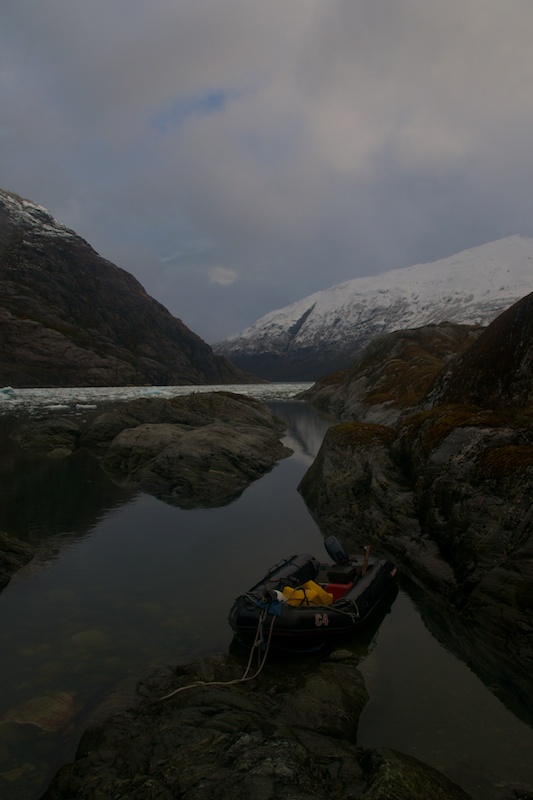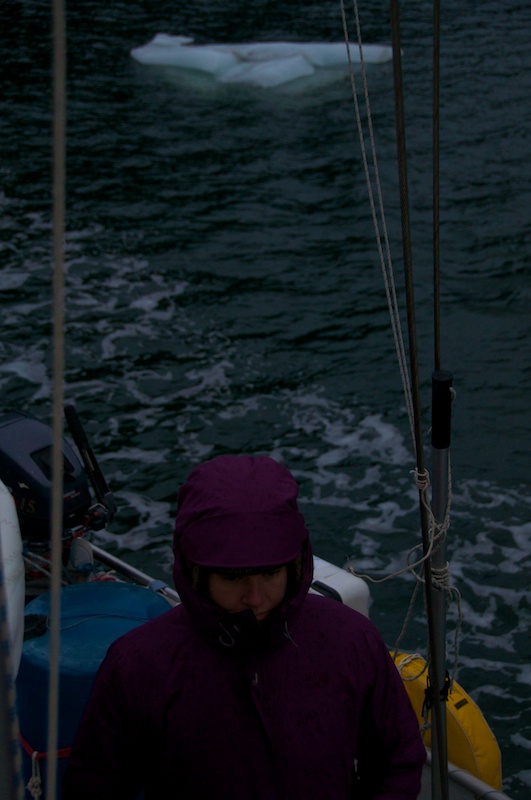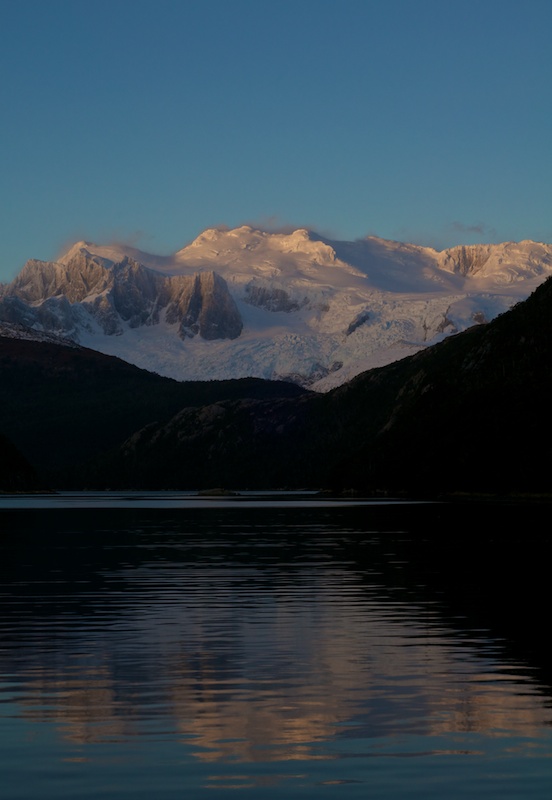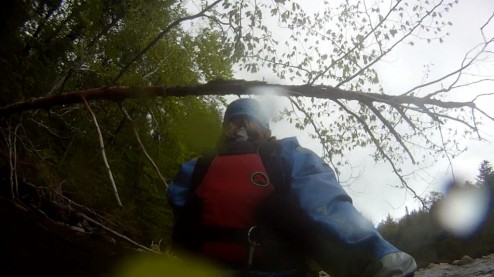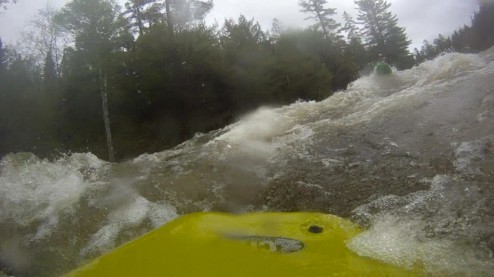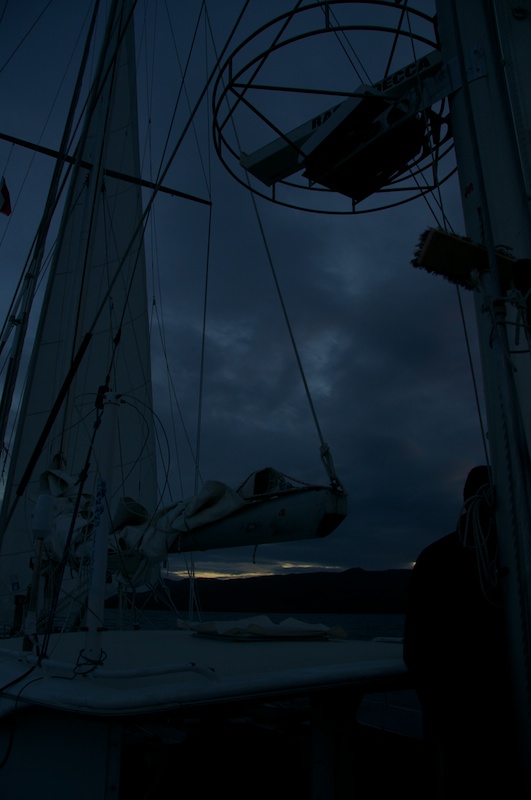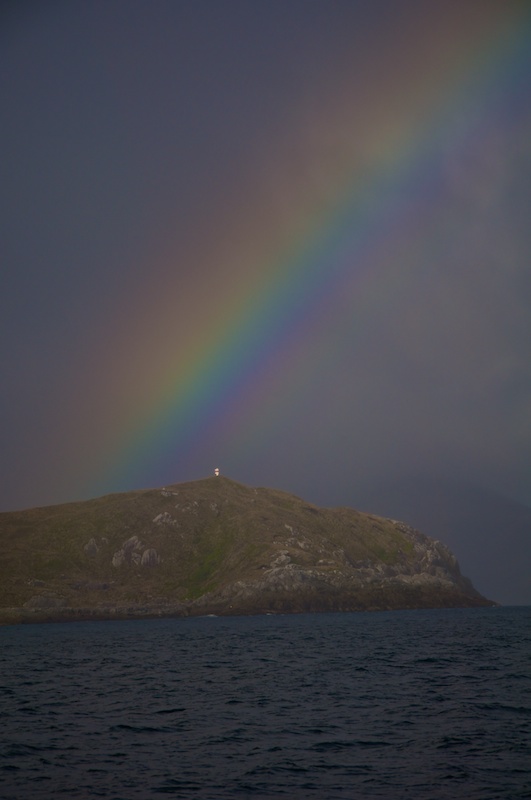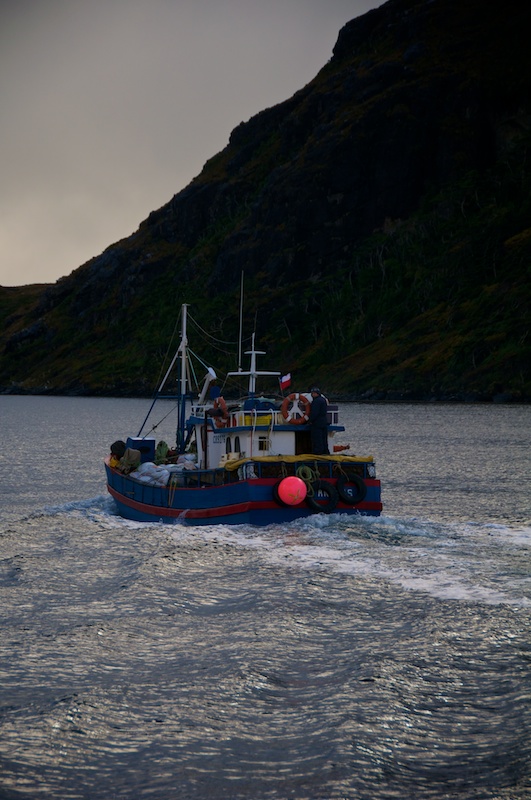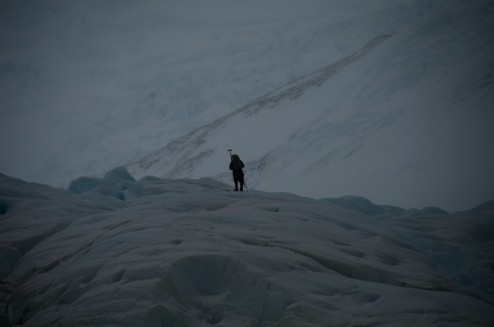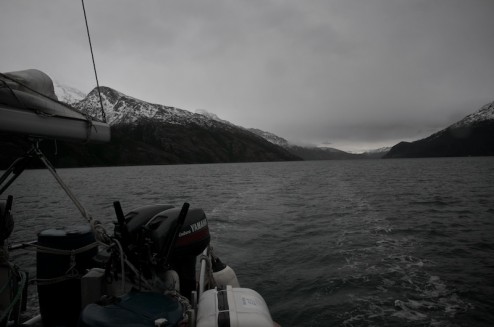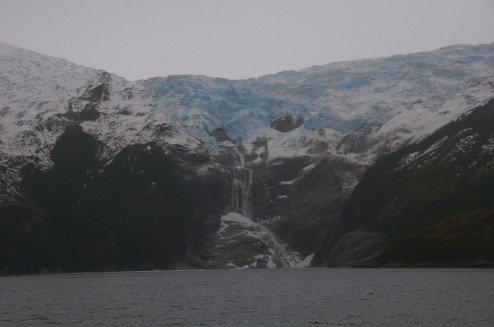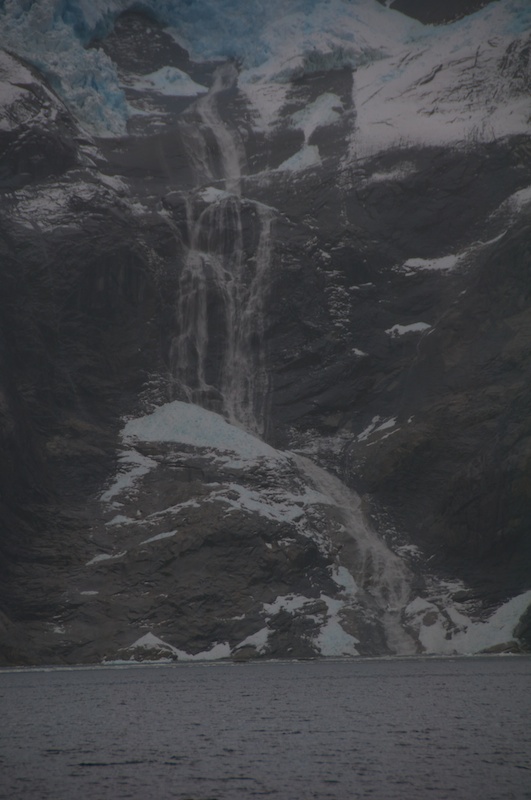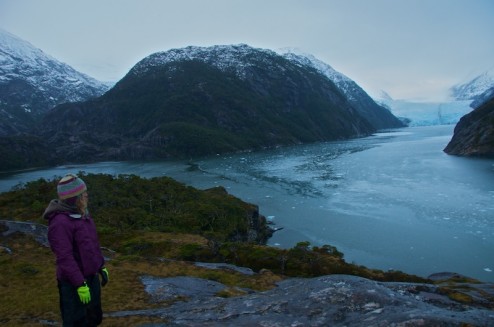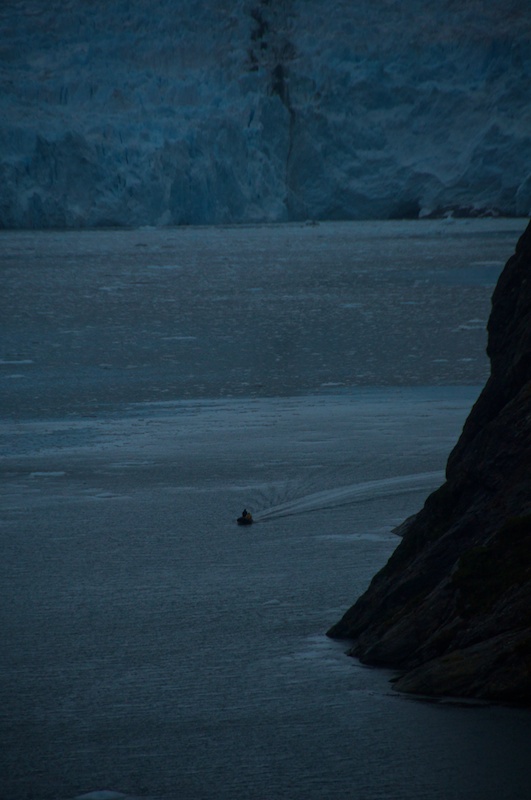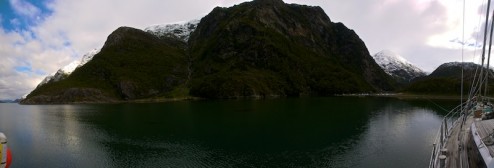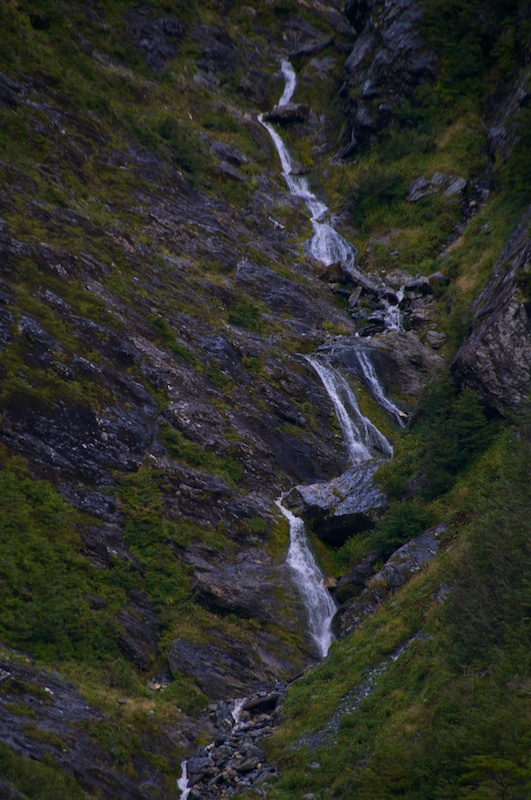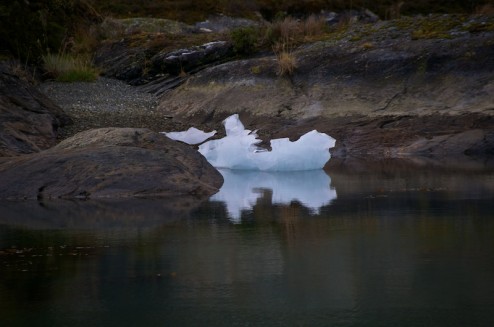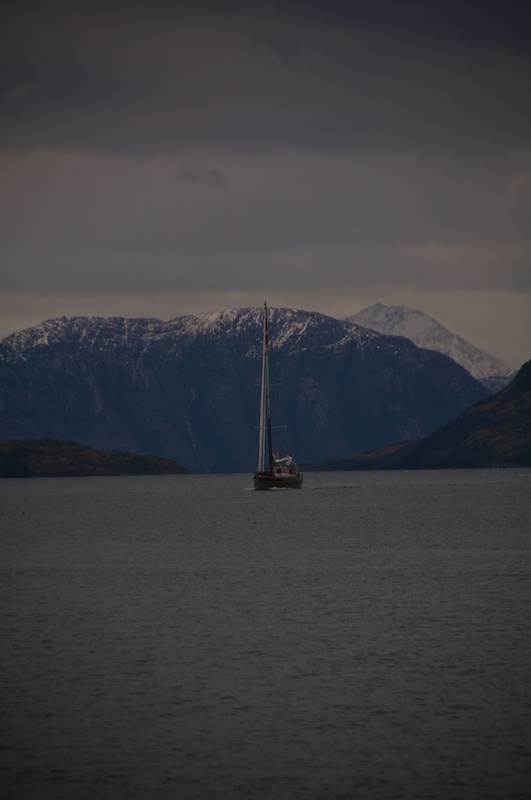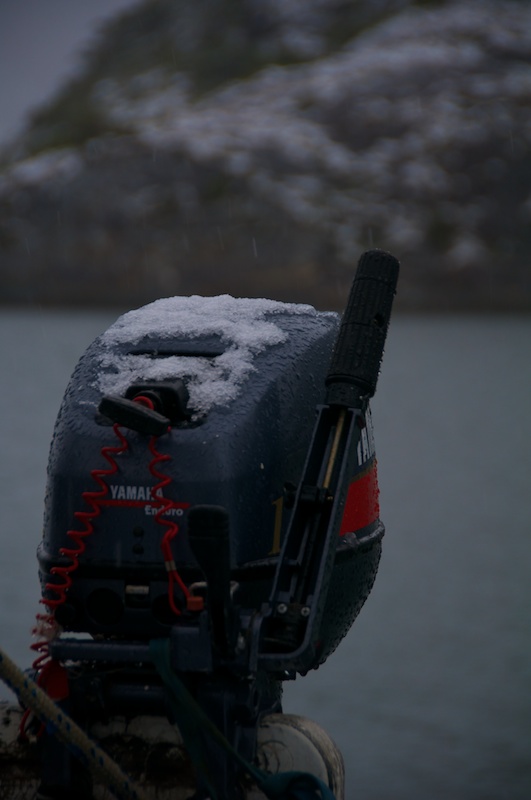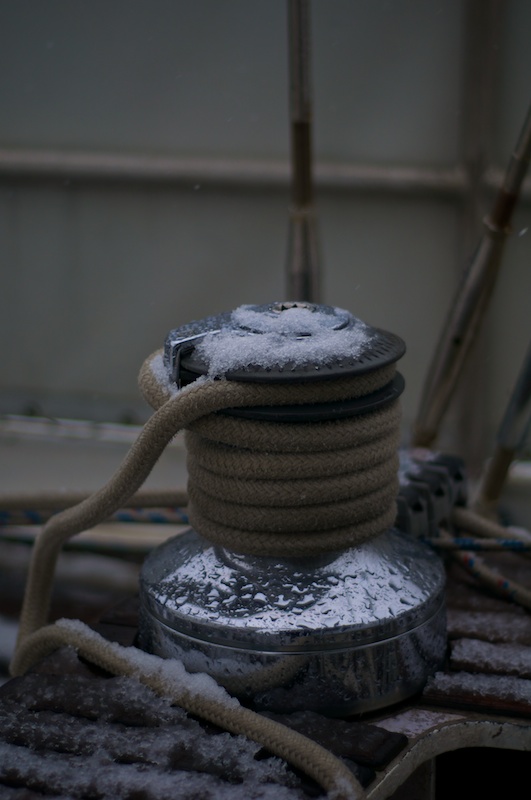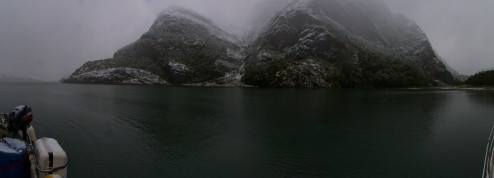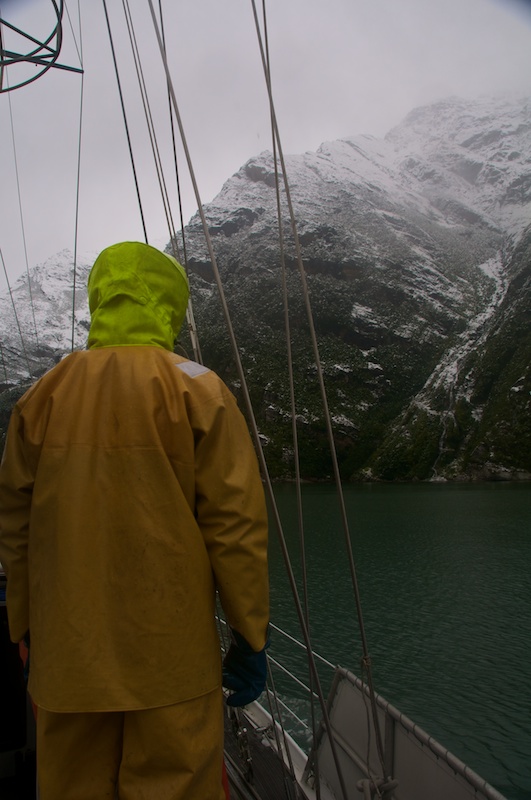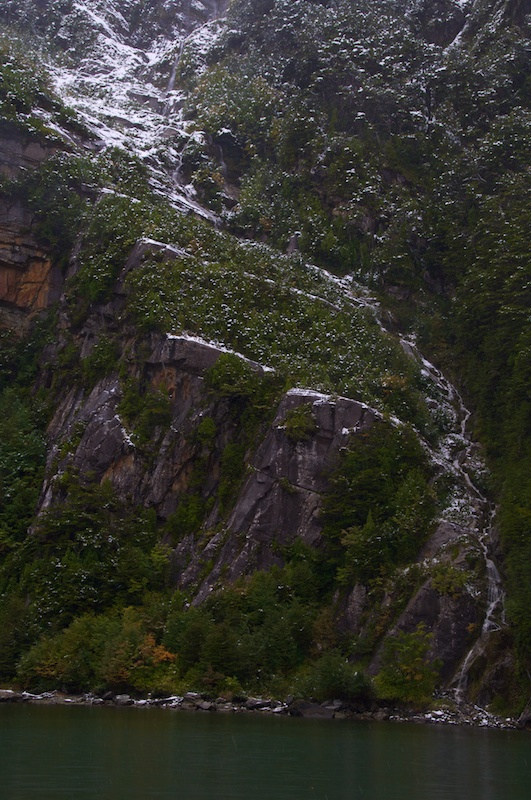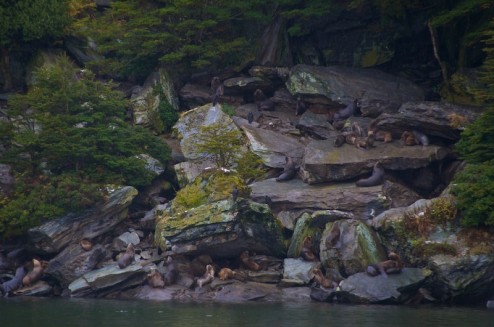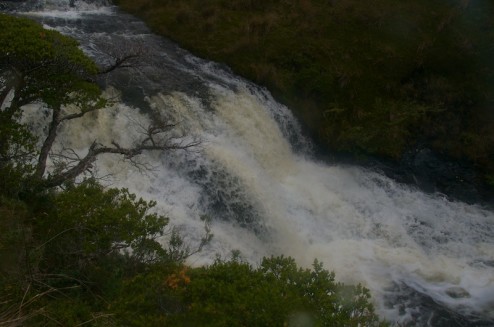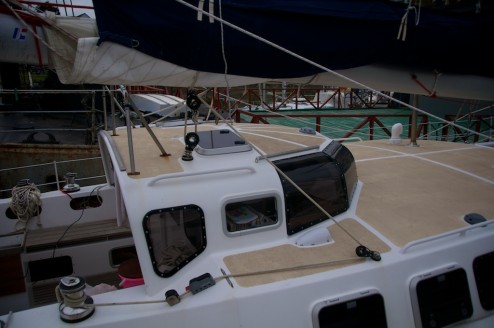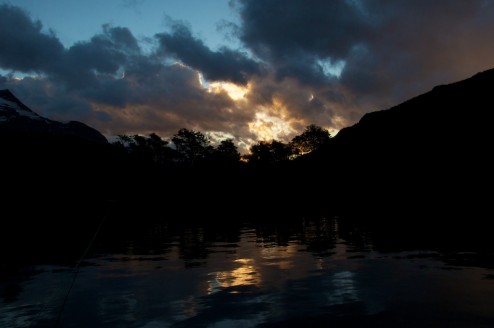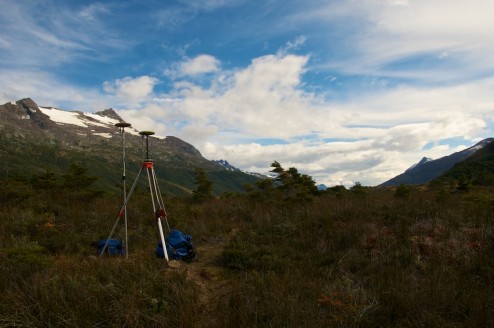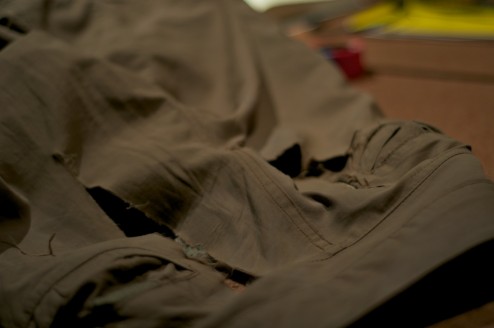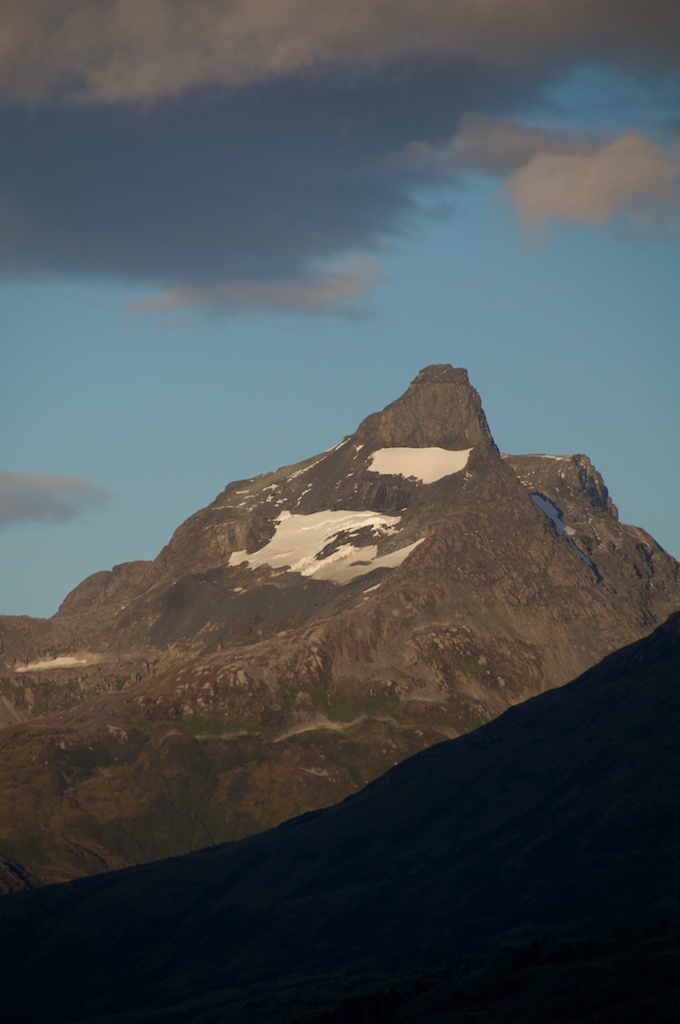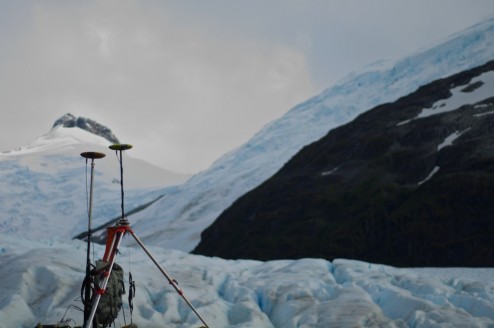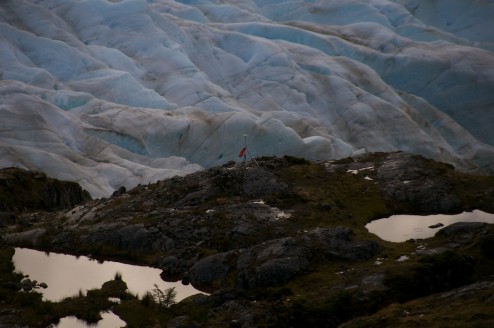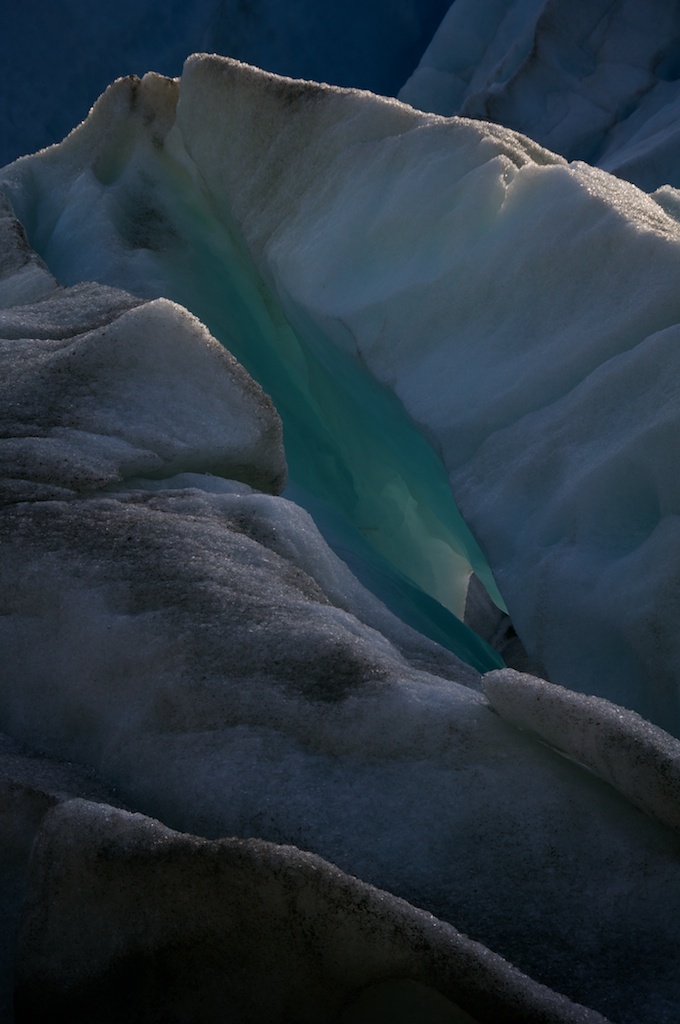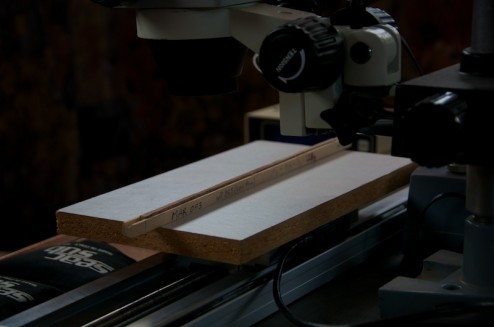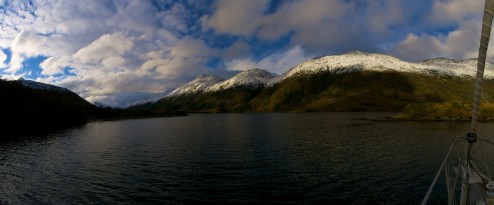Waking up early
We decided to get an early start out of Caleta Emelita and set our alarms for 6 am (Charlie Time, which may or may not be the same as Chilean Time) because we could at least start to drop lines in the dark. Pretty soon we were underway and watching the sun rise over Canal O’Brien before we headed out into Bahia Desolada. I went back to bed expecting to be up and skippering through the night.
After waking up a few times to catch stuff that was banging about below, I finally got up for good around three just in time to find out that we were going to head into Caleta Brecknock and tie up for the night. For the first time the Bruce anchor didn’t set the first time that we dropped it, and with the uncommon wind direction (lightly from the East) shore lines wouldn’t work great to hold us off on their own. The second time we sent the Bruce down it held, and three shore lines later we went below for another amazing meal from Christine.
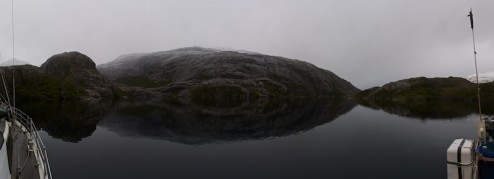
Caleta Brecknock early in the morning.
We also got moving early on the eleventh, because we were possibly going to have another long day to get to Puerto Hope before dark, so we left Caleta Brecknock in the gloom.

A very calm morning for the Patagonian Fjords.
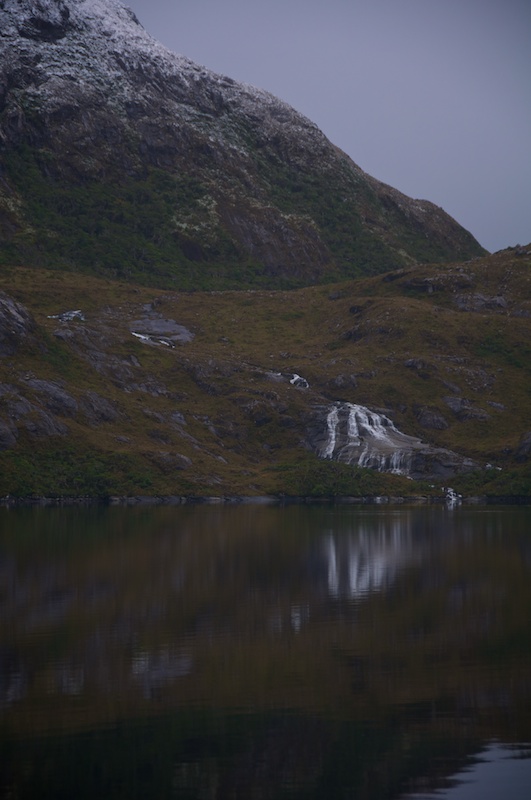
I wonder what that would look like with more water.
I spent most of the passage around the Brecknock Peninsula below catching whatever decided to take flight despite our preparation of the boat. It probably was actually worse going around the Brecknock without much wind, as we didn’t have anything to stabilize the boat, so we just got bashed back and forth by the swells rolling in.

New Zealand somewhere past the blue sky.

Ghosting our way into Canal Cockburn.
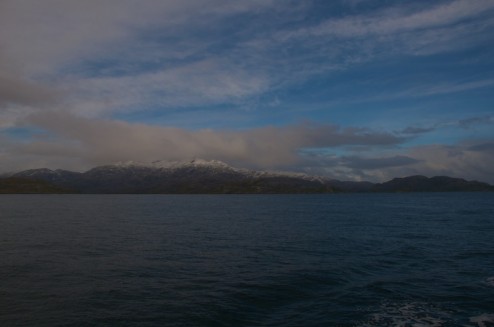
The blue sky lasted a while longer highlighting the snow covered peaks along the Brecknock Peninsula.

An Armada patrol boat went quite quickly past us. Apparently when vessels get in trouble one of these patrol boats is sent to tow them back, unfortunately they won’t slow down which is often not to helpful for the boat being towed....
As we passed behind Isla King we encountered a feeding frenzy. Apparently a bait ball of tiny yummy critters is formed by currents, which attracted many larger critters to dinner.
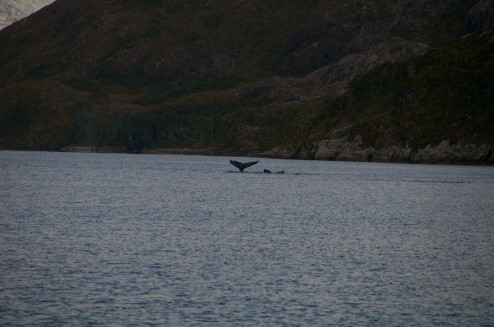
A couple of whales (probably humpbacks according to Christine).
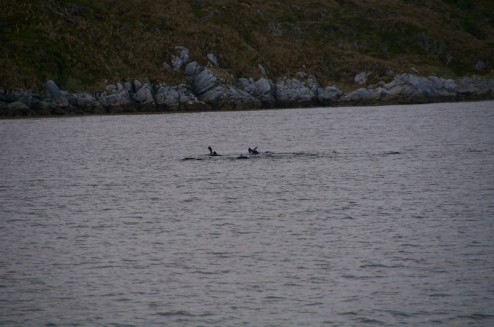
Happy Seals
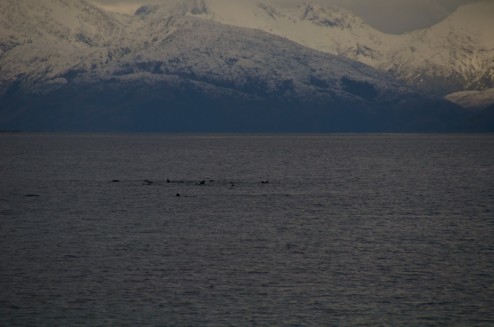
Hungry Seals
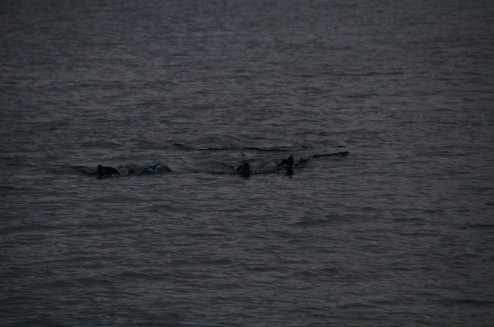
Inquisitive Seals
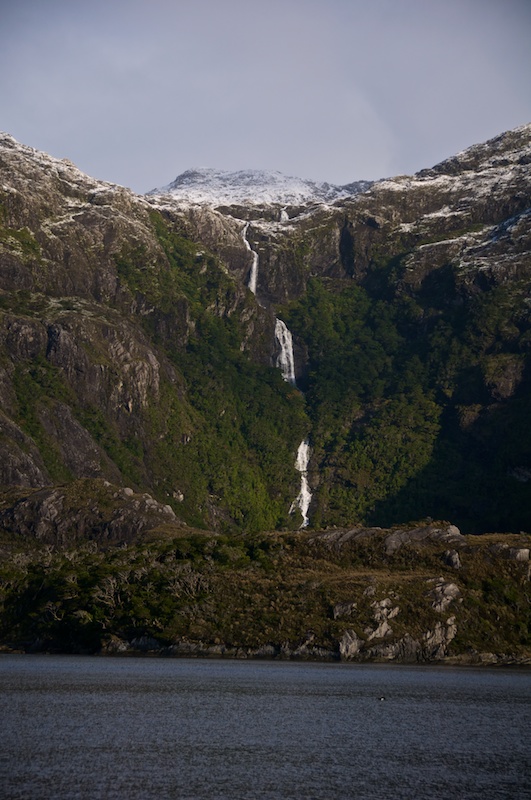
Some big waterfalls that Charlie was interested in as a possible ice climbing route.
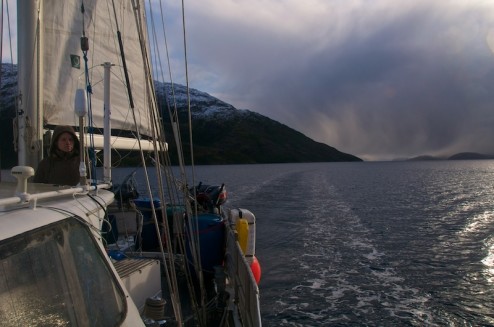
Keeping watch for more marine mammals.
Soon we saw Mount Sarimento in the distance before we pulled into Puerto King for the night. Puerto King is big enough, yet shallow enough that we were able to depend on the Bruce anchor which went back to holding without problems.
Another scheme
Since the grand plan to shoot all the way to Bahia Parry as fast as possible hadn’t happened and we had very little wind on the twelfth, Charlie decided to try to spend some time exploring the moraines and trees ahead of the Contramaestre glacier coming off of Mount Sarmiento. Apparently when Fitzroy had a painting made of the glacier coming all the way down to the water which has recently been debated by the scientific community. Since we had the weather window and it was on the way we decided to get up early again to make it happen.
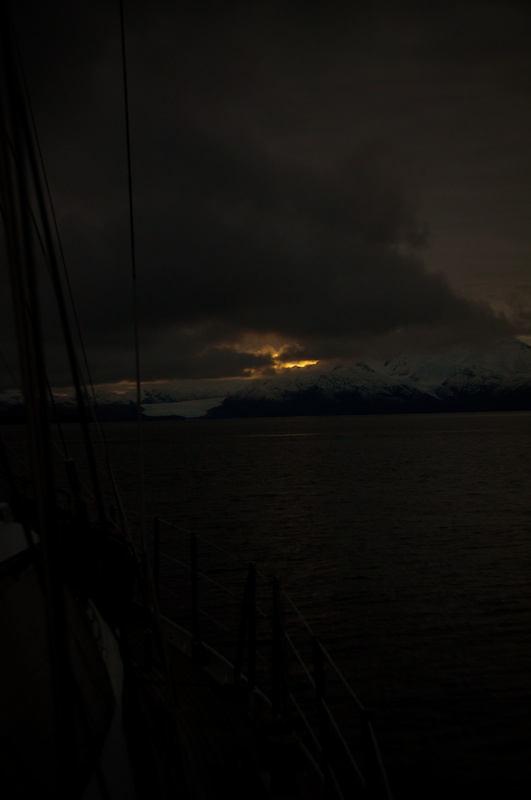
Sunrise over Sarimento.

It’s always nice to see a sunrise once in a while.

Mount Sarimento looking like it’s on fire.
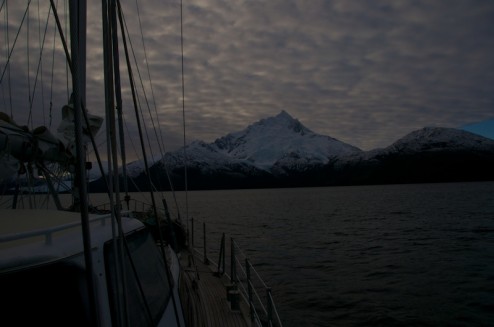
The clouds eventually lifted a bit letting us see the peak of Sarimento.

Once we got even closer blue sky even rolled in making it easy to make out the ice mushroom surrounding the peak.

I don’t get the feeling that the mountain is often seen with this much blue sky.
After dropping the hook in about 40 meters of water, 100 meters of chain stood in between Ocean Tramp and the shore about a 150 meters away, so Charlie and I hopped in the zodiac for a quick mission to the beach. Charlie took everything he needed to take a short dendro profile between a the output lake of the glacier and the beech. I took everything I needed to stay warm while hanging out near the zodiac just incase the wind changed and tried to push Ocean Tramp onto the beach.
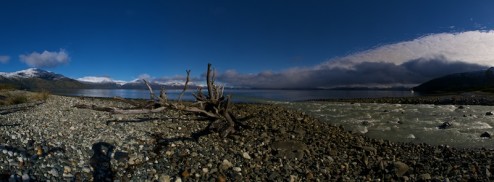
And what a nice looking beach it was, especially with the sun that we had for a change.
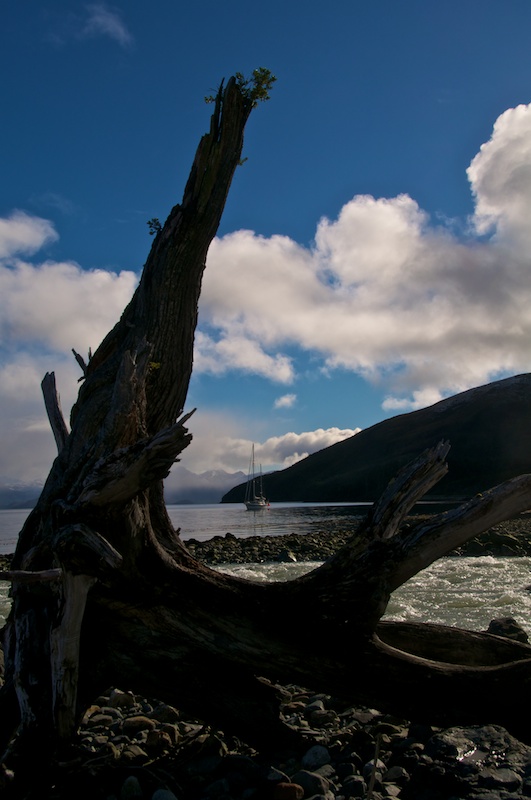
Some trees that must have been carried down in floods were rather cool shapes.

A much wider anchorage than normal for Ocean Tramp. On the stern you can see the weather station that Charlie just put up the night before.

A couple of these birds hung around while I was parked on the beach.
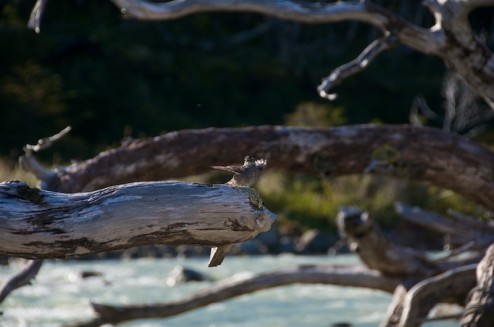
Another one of the birds. They are pretty fearless, actually landing on my leg at one point.
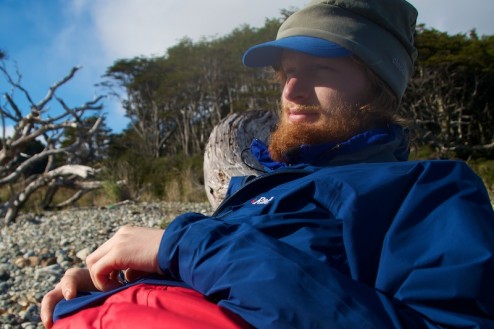
I greatly enjoyed the change of weather and getting to sit in the sun for a change, so here’s an approximately halfway though the trip self-portrait.

Another river that I think that could be a possible paddle with higher water. It would probably be pretty cold though, as even now it was carrying small blocks of ice down to the ocean.
Onwards to Parry...
From the base of Sarimento we motored up Canal Magdelena to Puerto Hope for the evening.

Moonrise over Mount Hurt and the other mountains along Seno Keats reaching down towards Seno Agostini.
Puerto Hope is another one of those rare Patagonian Anchorages which is wide and shallow enough to anchor with just an anchor, no shore lines involved.
On the 13th we beat an early escape from Puerto Hope and got to see another sunrise.
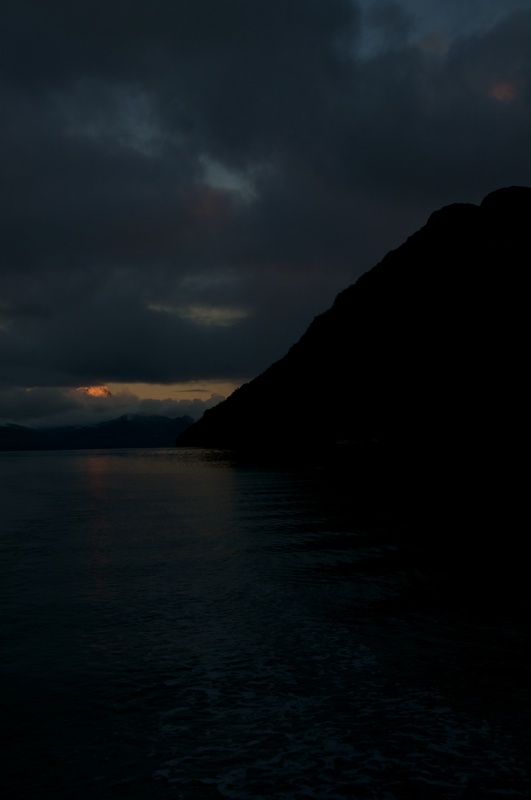
Just a little weaving on our way out of Puerto Hope in the dark.
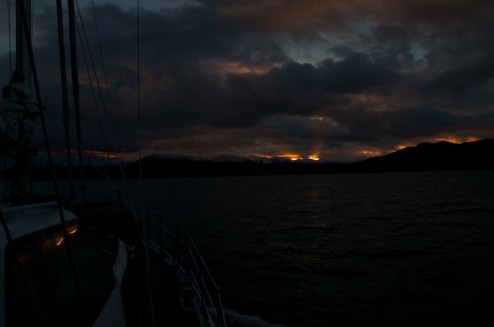
Heading towards the light.
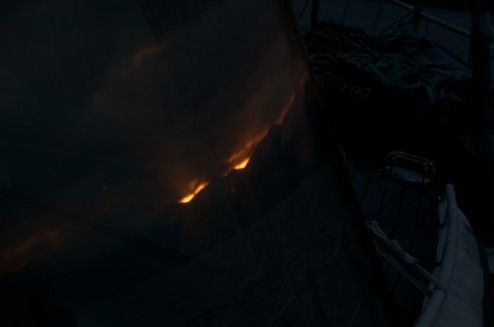
Doctor Who’s crack in time and space...or just an reflection?
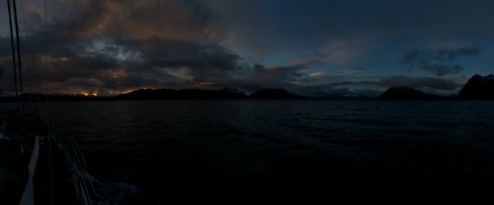
Blue sky again!

Getting lighter.
We headed into Canal Gabriel which is a shortcut that allows us to avoid heading all the way up towards Punta Arenas. We managed to hit it just right, but apparently it gets nice and rough at the wrong point in the time.

Instead we got to admire waterfalls coming down from the closest ice cap to Punta Arenas.

The full icecap.
Soon we found ourselves motorsailing out into Seno Almirantazgo and past Bahia Brooks.
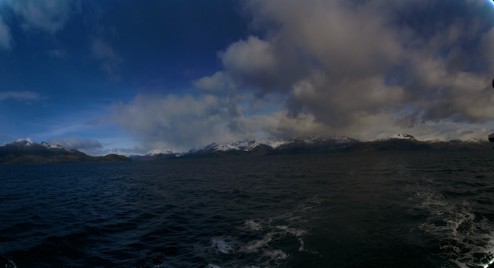
Putting some mountains behind us.

Motorsailing with the genny up!
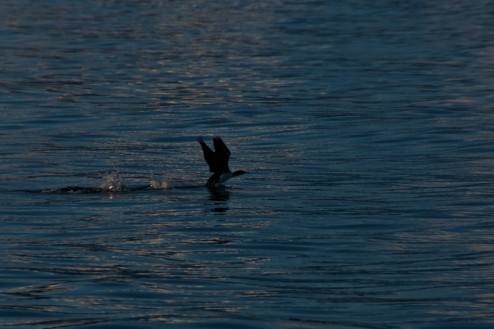
Powering up for takeoff.
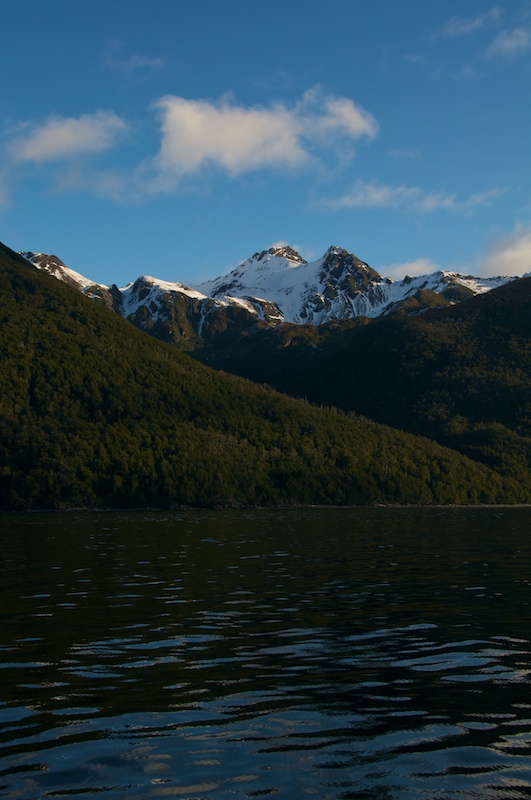
Some nicely lit up mountains on the way down.

The mountains on Terra del Fuego stretch on and on.
Charlie decided to pull into Bahia Ainsworth for the night so we could explore Bahia Parry with a reasonable amount of daylight remaining. It also would allow Charlie to download data from one of his weather stations.
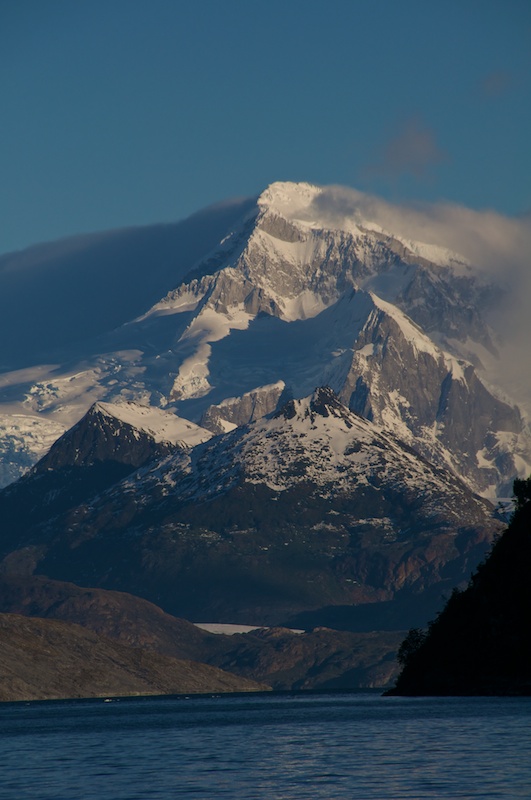
Mount Darwin rising up.

The benefits oh having crew member number five, the autopilot.

Looking out from the Bahia Ainsworth anchorage.
We went for a quick hike during the sunset over to Charlie’s weather station and up a hill. Thankfully the filling moon was there to accompany us.
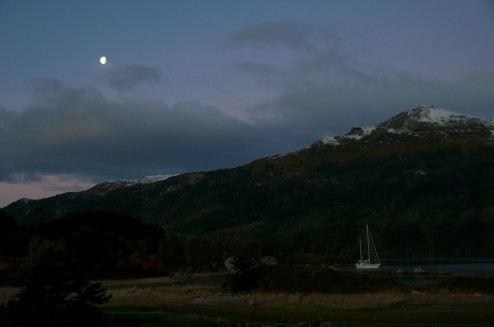
Ocean Tamp among the erratics.
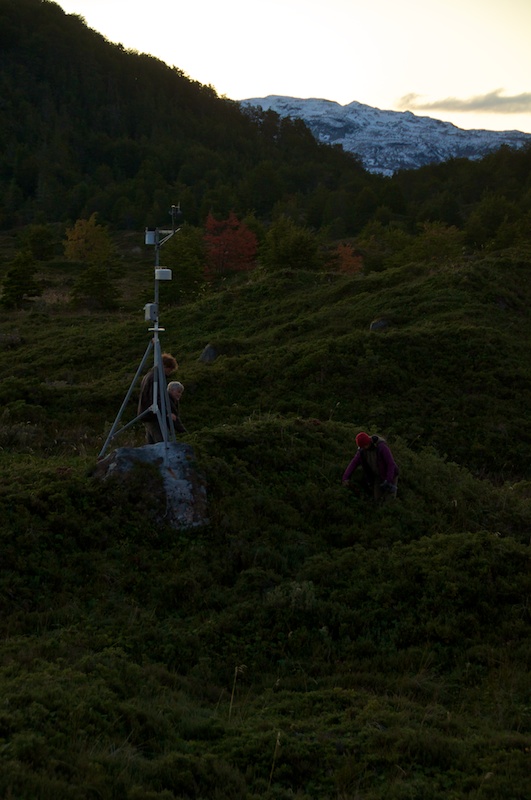
Attacking some chowera berries next to the weather station.
In the morning we woke up to find that the wind didn’t agree with our anchor and shoreline setup, but thankfully it was another nice day, so we just reset further out so that Charlie could service his weather station before we headed further SouthEast (usually saying SouthEast now I think of paddling around North Carolina now...).
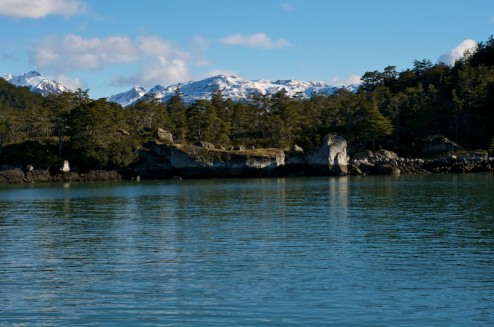
The erratics and small evergreens made Bahia Ainsworth feel a bit like home, but the erratics are possibly quite a bit younger than the ones found around the coast of Maine.

Bahia Ainsworth
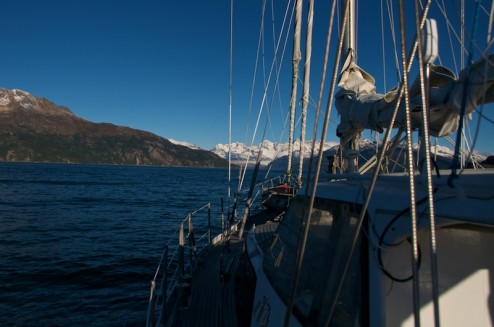
Turning into Bahia Perry before heading into Puerto Stanley.
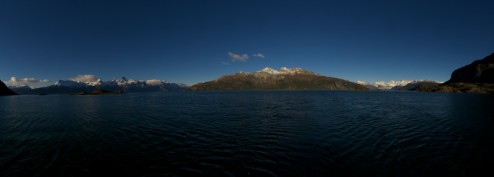
Just outside Puerto Stanley...

...and inside.
On the fifteenth Charlie took off alone in the big zodiac for a scouting run to see the ice conditions down the fjord. On the sixteenth we got prepped (while it rained) for heading down and setting up a weather station with two time lapse cameras. We also packed supplies for dendrocronology sampling , and some tape measures to look at a possible recent jökulhlaup (glacier outburst flood) that we think we can see from Landsat imagery between 2005 and 2008.
Bahia Parry
On the seventeenth Charlie and I loaded up and with an alpine start of two (pm ....) we took off in the zodiac down the fjord. We initially made really good time because the water was super smooth.
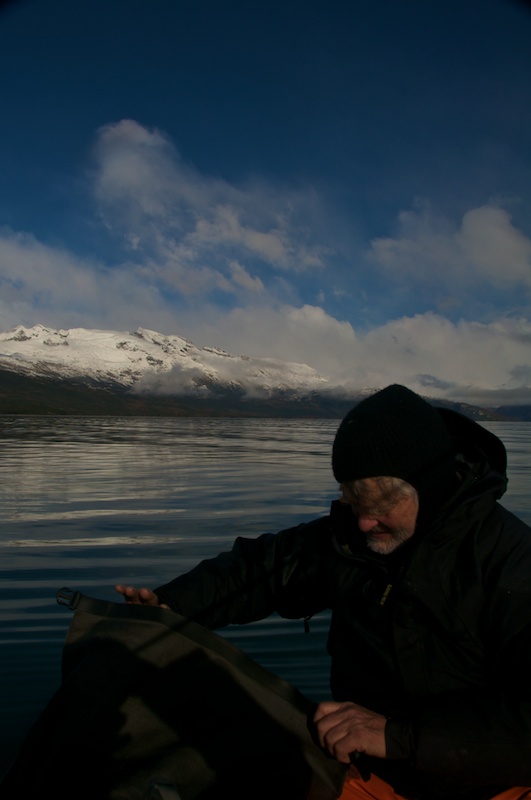
Bundling up

The other inhabitants of the fjord.
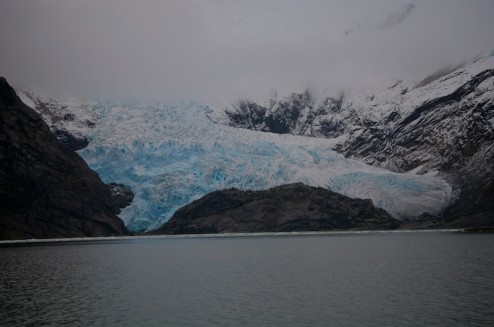
Another glacier that we zipped past on the way down.
Soon we had to start slowing down as there was ice to weave through that was relatively hard to see in the midday sun.
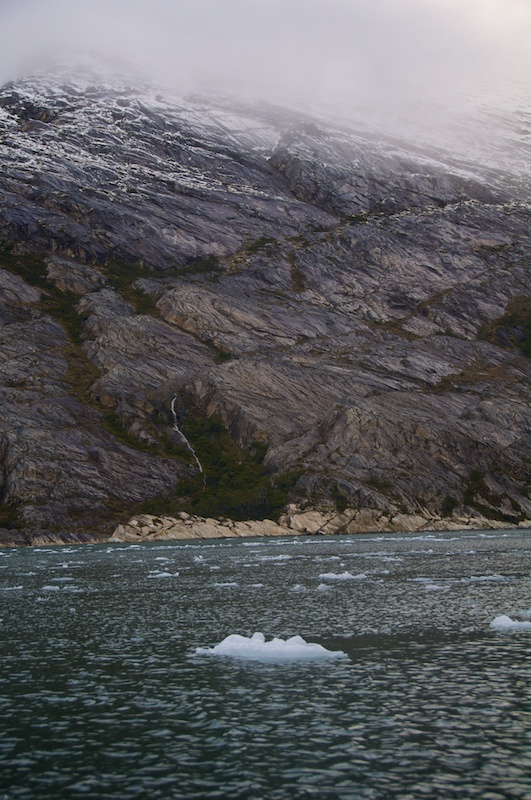
Slowly the ice got thicker.
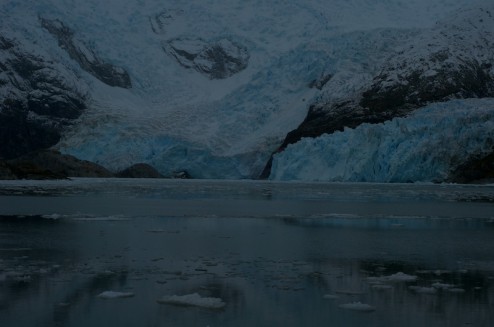
Pretty soon we made it down to the bay where a couple different outlets of Parry glacier were spilling into the bay.

Ice between us and our objective.
We ran into a problem that there was quite a bit of brash ice between us and our objective, a small point where we could set up a weather station with two time lapse cameras, one camera pointing at scientifically important Darwin glacier and another pointing at the more interesting to watch Parry glacier. Being a little hard headed we tried to bust our way in anyways. Relatively quickly we found out that it wasn’t going to happen, so we turned around and pushed our way out.
When we had just about pushed our way into a lead of open water we decided that it probably would be a good spot to try to get a temperature profile of the water column as we wouldn’t move around too much in the ice. Thankfully I had rigged up the GoPro camera recording video on the stern, so I’ll just grab a couple pics from that to tell the tale.
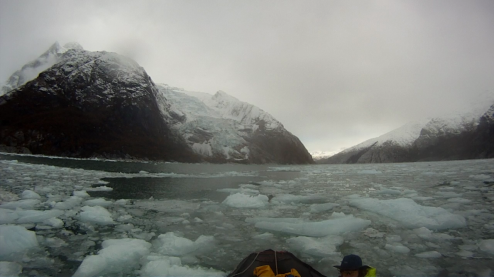
I’m thinking ‘you sure this is the best spot?’

Starting to take some samples.
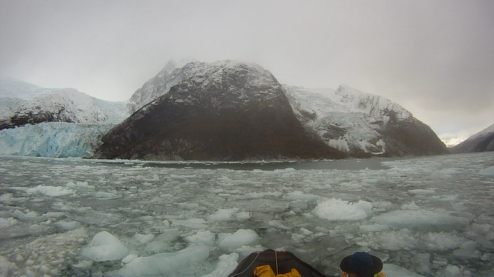
‘Hmm....’
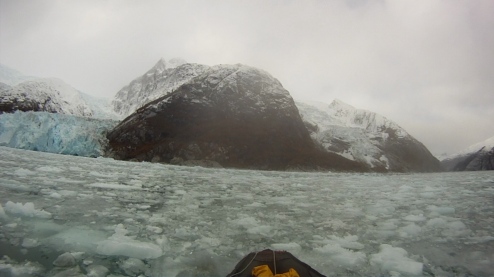
Where did the open water go?
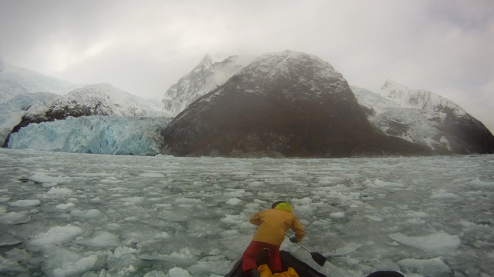
Have I told you lately that I can’t stand to be in the bow of a canoe?
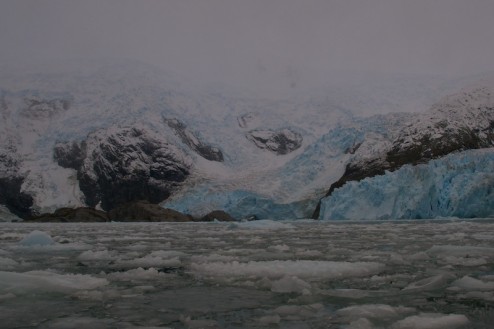
The ice between us and Parry glacier now.
So after that debacle we retreated to plan two, get some dendro samples at trim-line where the Darwin glacier was 60 or so years ago. Charlie ran up the hill while I babysat the zodiac making sure that we weren’t going to get iced in (again).
I also got a little time to tinker with my camera to figure out what was wrong, otherwise I would have had a bunch more pictures from before our encounter with the ice. I got it working again after a slightly involved trial and error process (switching battery, lens, and SD card eventually worked, and after a bit I was able to move back to my big lens, but I defiantly had a faulty SD card).
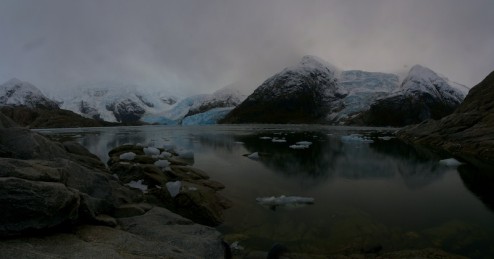
Compare the outlets of Parry glacier on one side of me...
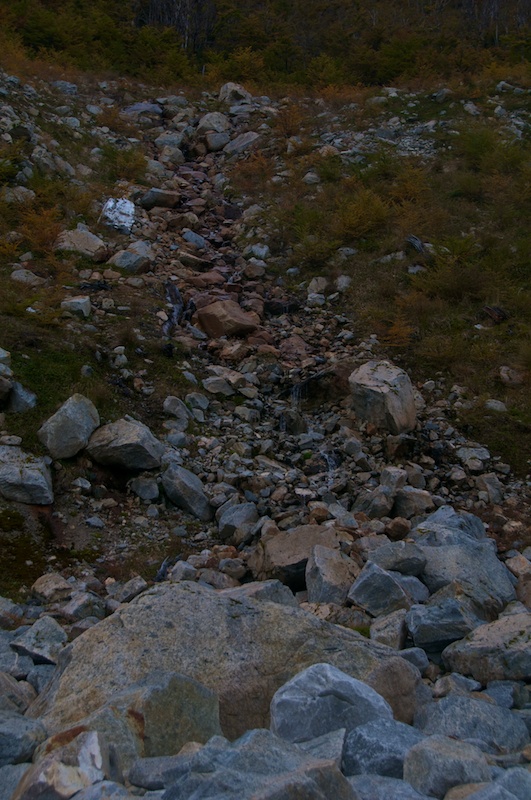
... with the bushes and trees (that Charlie was interested in) if I turned around.
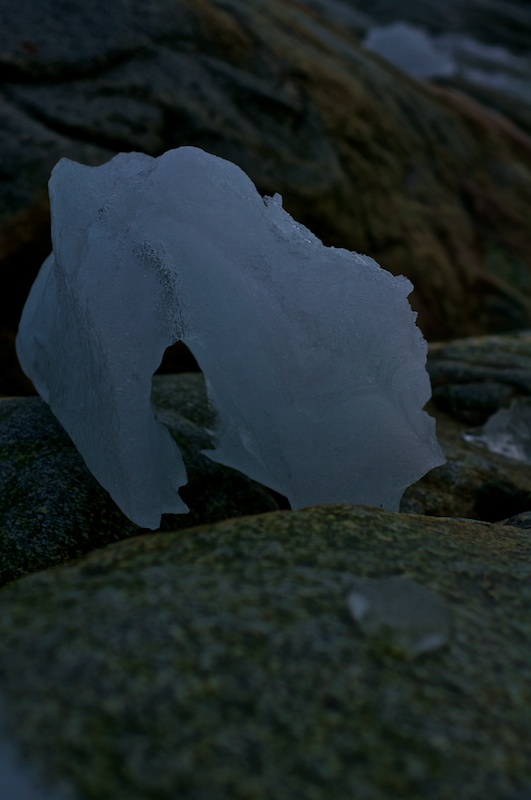
I should have grabbed a chunk to make ice cream with.
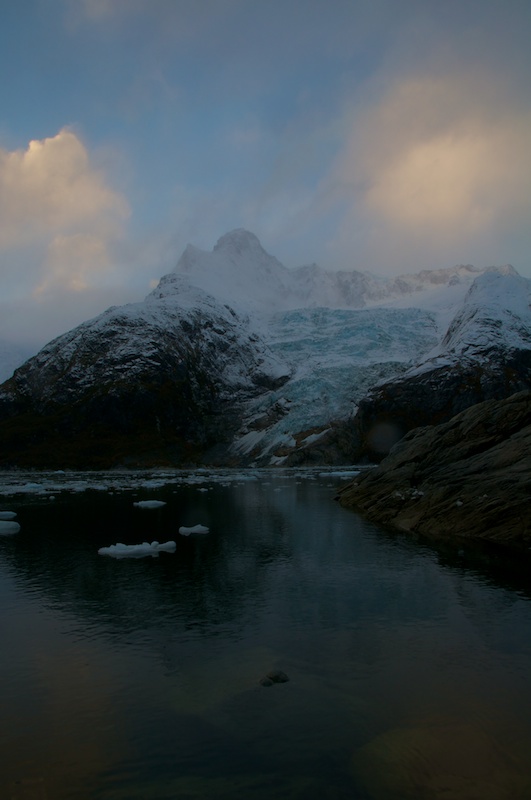
Just before we headed out the peak came out of the clouds.
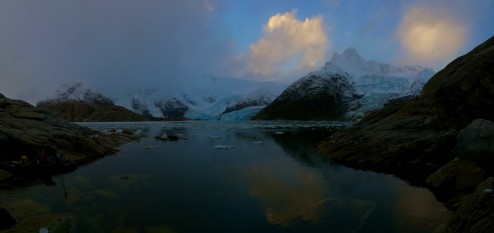
The outlets over on the right were incredibly busy calving, there was constant noise of ice crashing down which is absolutely amazing.
With a few dendro samples in had we took off so that we could navigate our way though any ice that was still floating further out in the fjord with at least some light. As soon as the sunset though a brilliant yellow full moon rose which provided just enough light for us to pick our way back through a few islands and some kelp to our anchorage in Puerto Stanley.
 [/largeimage]
[/largeimage]